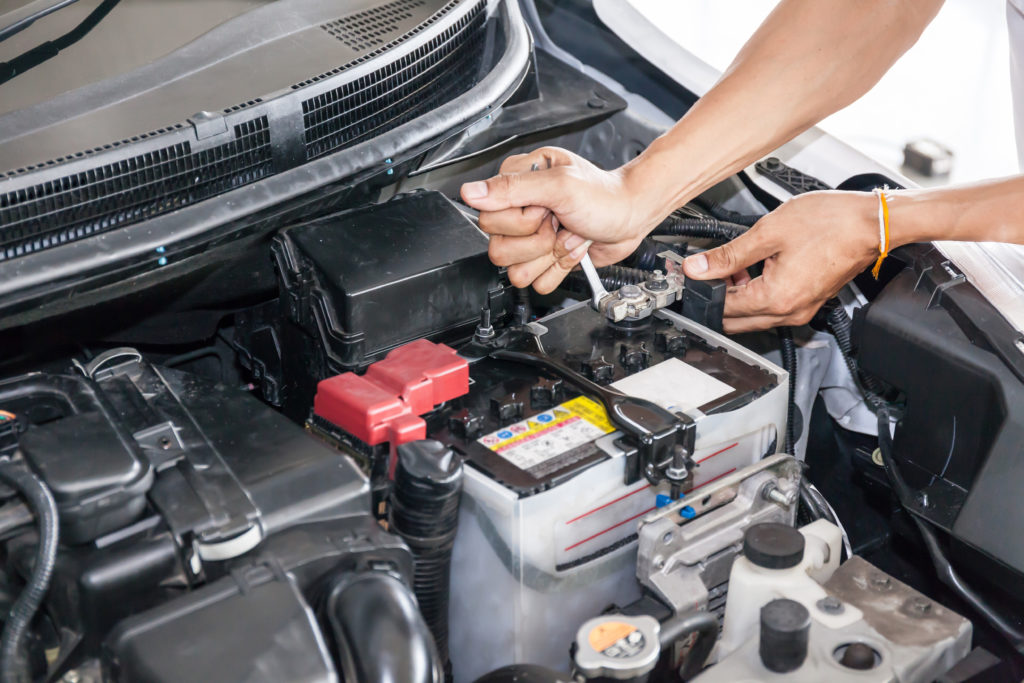The UK is gradually coming out of Coronavirus lockdown. As more and more people return to work, many of us will be driving for the first time in months. Unfortunately, cars aren’t really designed to sit idle for long periods of time. So don’t be surprised it, when it’s time to drive to work for the first time in a while, your car refuses to start.

Why do car batteries go flat if you leave them for too long?
It’s because a lot of the systems in your car still draw power from your battery, even when the engine’s not running. For example, the alarm systems, and your saved preferences for things like seat positions and temperature. That’s why, even if you’re not currently driving to and from work, you should still aim to drive your car at least once a week.
If your car battery’s flat, you could try to jumpstart it. Alternatively, you can try to charge the battery yourself.
How to Disconnect and Charge Your Car Battery
Before you try to drive your car again after lockdown, it’s a good idea to test your battery. This way, you can act to prevent any possible issues before they cause you any inconvenience. Head here to read our full guide to checking your car battery.
Most car batteries can last for up to five years. As they get older, they get less efficient. So if you’ve had your battery for a while, consider getting a new one. It could save you a lot of trouble in the long-run. Similarly, you should never try and charge a leaky or damaged battery. So if you spot any signs of wear-and-tear while doing your tests, it’s definitely time to get a replacement.
If you do want to charge your battery yourself, first you’ll have to disconnect it.
How to Disconnect Your Car Battery
- Safety first! Turn off your car’s ignition, and wear safety gloves and goggles.
- Start with the negative terminal. It should have a black cover. Also look out for a minus sign (-). Using a wrench, turn the nut on the negative terminal counter-clockwise until it’s loose. Once it’s loose, carefully pull the negative connector from the battery and put it somewhere safe.
- Do the same with the positive terminal. Do not let the positive connector touch any exposed metal on your car. It may have some residual current that could damage your car’s circuits.
- Carefully remove the battery. There should be a few brackets holding the battery in its tray. Remove these, then lift the battery straight up and put it on a flat and dry surface. Car batteries can be heavy, so take care!
How to Charge Your Car Battery
You’ll need some specialist equipment to charge your battery. Most auto shops sell car battery chargers. They’re pretty easy to use – you just have to connect the right cables to the right terminals before plugging the charger into the mains. Take care though – each charger is designed for use with specific types of car batteries, so make sure you’re using one that’s right for you.
If you’re going to charge your battery yourself, you’ll have to take care not to overcharge your battery. Some chargers switch themselves off once the battery is fully charged. Others don’t. Make sure you know what type of charger you have. The charger’s instructions should give you an idea of how long it’ll take to get a full charge, so it shouldn’t be too difficult to avoid overcharging.
Battery chargers are expensive. And unless you know exactly what you’re doing, disconnecting and reconnecting a car battery can be dangerous work. Don’t take any unnecessary risks. If your battery’s run flat or you need a new one, you might be best getting professional help.
At Go Girl, we offer breakdown cover as an optional extra on our comprehensive car insurance policies. So no matter what happens, there’ll always be help at hand. Head here for more information.



